Hello friends! Sorry to keep you waiting on the main adventure, but after getting back from a trip this weekend, I realized there was no way for me to finish a comic in time. So I’m doing the Question Session now, and comics on Wednesday and Friday.
Today I’m going to address something that was left out of the salamandrian encyclopedia entry: their growth and development! Basically it’s an excuse for me to draw baby Goldgills AND make it educational! (If only Skärva could get ahold of the following pictures, he’d have some great blackmail material.)
Salamandrian eggs are about the size of a large orange. They are moist and relatively soft, and need to be immersed in saltwater. In the early days of the species’ evolution, the eggs were laid in the sea and fiercely guarded, but as salamandrians developed culturally, eggs were lain in protected pools on land. These days, most expecting parents keep a large tank in their home in which to house their egg(s).
The fetus grows in the egg over about a month, until it becomes too big- then the egg bursts and the baby awakens to swim around. The baby is quite small, but grows to roughly the size of a human newborn in a matter of weeks, at which point its growth slows down. Biologically, this was an adaptation in ancient times to protect the babies from certain predatory fish, although concerned parents still needed to keep them in shallow waters, away from big scary sharks. (Real sharks. Skärva does not eat babies.)
A baby salamandrian develops both its gills and lungs while in the egg. Although it can’t move around the ground on its own just yet, this means that once the child hatches, the proud parents can pick it up and carry it around with them on land.
After about a year, the baby’s arms have grown enough so that it can experiment with crawling. It’s also at about this time that the baby starts to develop its spot coloration. Females start to get spots and stripes, and males gain a single spot (usually on the back) which grows and spreads throughout the body. This process continues throughout the lifetime, and very old salamandrians become almost entirely their spot color.
By the second year, the baby has developed legs strong enough to walk on. However, it takes a while for the legs to catch up to the more thoroughly developed arms. This is often referred to as the Lurkin stage. “My son’s still outgrowing his Lurkin legs!”
Salamandrians are considered close enough to nature that – like flish – it’s perfectly acceptable for them to go about without clothes on. However, many of them choose to wear clothes as a means of expression – and some choose not to for the same reason! Therefore, salamandrian parents typically do not clothe their babies (except sometimes in diapers while out of water). Children are given clothes when they express a personal interest in wearing them. Those children who habitually want to wear only one favorite article of clothing or accessory, which changes with their whims, are colloquially called “demon children” or “little demons” in reference to the ritual of single demon males.
As salamandrians grow, they become more tall and slender. Salamandrians are some of the largest sentient beings in Idenau, and are taller than humans on average.

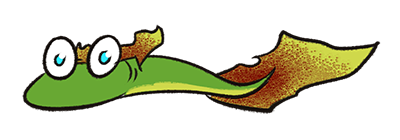
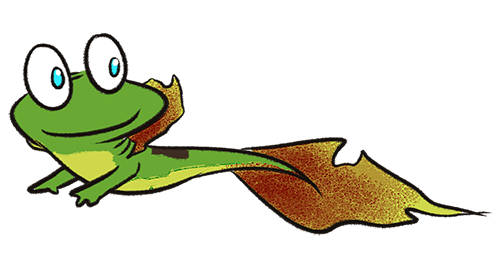
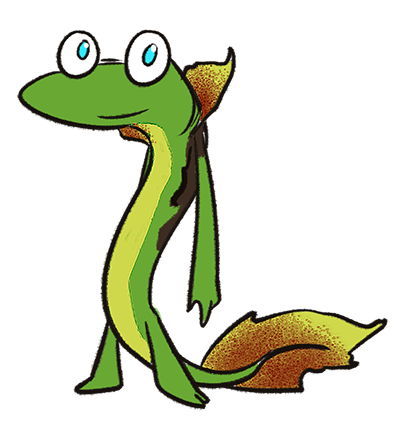
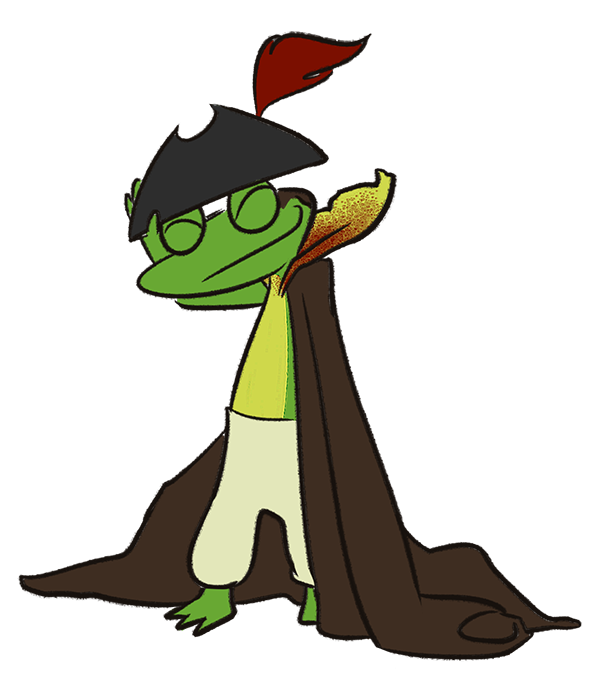
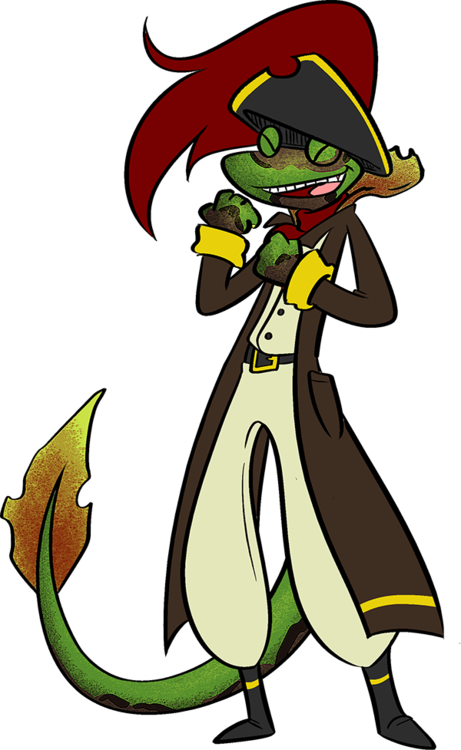

Aaaa. I love these little informative segments. They are the BEST.
And more Goldgills is always a good thing.
Yep! Also more behbehs!
Good to know that Skaervs doesn’t eat babies. vuv
I love these in-depth little thingies. It’s really cool how much thought you put behind the characters!
On a totally unrelated note, but one I think you’ll understand: I CAN’T BELIEVE /I/ DEFEATED BLANK.
Well, not once they’re born. Don’t forget about this…
Blank just got complacent and lazy from inexplicably eating so many cupcakes and uh, being stroked on the blade. Through a sheath though. We practice safe stroking. Wouldn’t want to cut myself.
The Hat’s Feather’s Growth is most impressive.
Guys! It’s not the same hat!
Nevertheless, your cleverness was appreciated.
Hah, I love these segments!
You’ve got me curious, what’s the largest sentient being in Idenau?
The Mother (of all plants) seemed to be pretty big, and she might be sentient. I dunno about sapient though.
She’s sentient in that she feels emotions. Like sadness when she’s missing one of her children before its time. She’s very sensitive to the state of nature, specifically plant life, throughout Idenau. Some might say her soul is simpler than that of a human, Lurkin, flish or what have you, but others – especially her children – say it is much greater.
We’re leaving that open. Who knows what we’ll encounter on later adventures!
This is everything I wanted and more.
The “lurkin” stage looks rather… Familiar.
It… it does?
There must be something wrong with me. The whole time, I kept thinking things like:
Is it healthy to take the eggs out of the ocean? Maybe it doesn’t cause many real major issues, but does exposure to currents and temperature changes not present in a tank help prevent some developmental issues?
Is it good to take the baby out of the tank? Out of the tank, they can’t move their fins and practice coordination. If they’re out for too long, will they have any kind of a developmental issue?
And that, my friend, is what I wonder when I read about biology in fantasy webcomics.
Can we see a picture of Goldgills getting his hat? He must’ve been really excited, was it a family heirloom or something?
Oh, wait, that’s a different hat. Is it a family tradition, though? Did he get the idea from somebody he looks up to?
Piracy! Our proud family tradition!
We try not to spill out our characters’ histories in comments. I don’t know if we’ll ever get into Goldie’s story within the pages of the comic itself. But we might go into it in a future question session or something else. :3
I can say he’s just playing dress-up in that picture, and he got his current clothes made for him when he was older.
Ha! I think the same kinds of things, but I didn’t want to write a novel’s worth of footnotes.
You still get some parents who insist on putting their eggs in protected parts of the ocean because that’s the “natural” way and they think their children will grow up heartier and healthier. But in all honesty, there are no noticeable differences. The eggs are adapted to be lain at any time of year, so water temperature isn’t a big issue. Goldgills was a tanker, he turned out just fine.
You could remove the eggs from water for brief transport but they can’t last long. They are permeable enough to allow for osmosis from the water, and they will drain and dry out quickly. If the baby hasn’t developed its lungs yet, it will die. If the baby is not developmentally ready to emerge from the egg, but the egg dries up and the yolk and nourishment within it becomes useless, it will be forced to hatch prematurely and there are a host of problems that could arise there. Basically the egg should not be removed from water except under absolute necessity or emergency.
It’s not bad to take a baby out of a tank once they’ve hatched. That way their lungs can get some practice. Parents disagree on the healthy or beneficial ratio of time spent in air. It’s a very personal decision for families.
Awwwwwwww, those are adorable!
Slender Salamandarian.
NOOOO
I love the skin texture, you should find excuses to use textures like that in the future, it is fabulous.